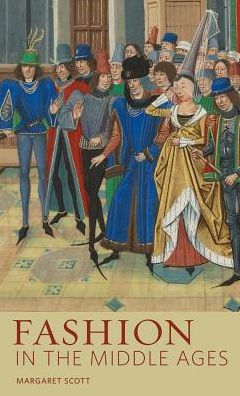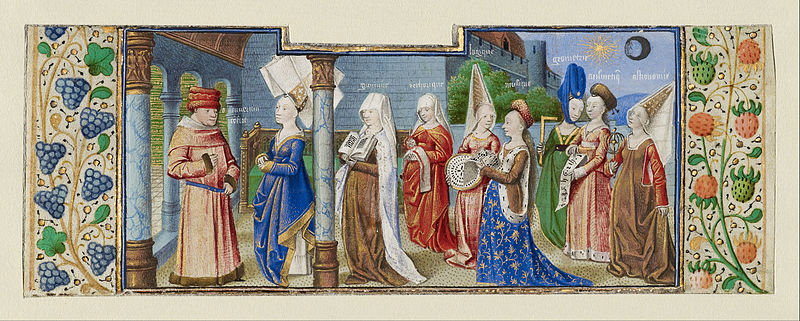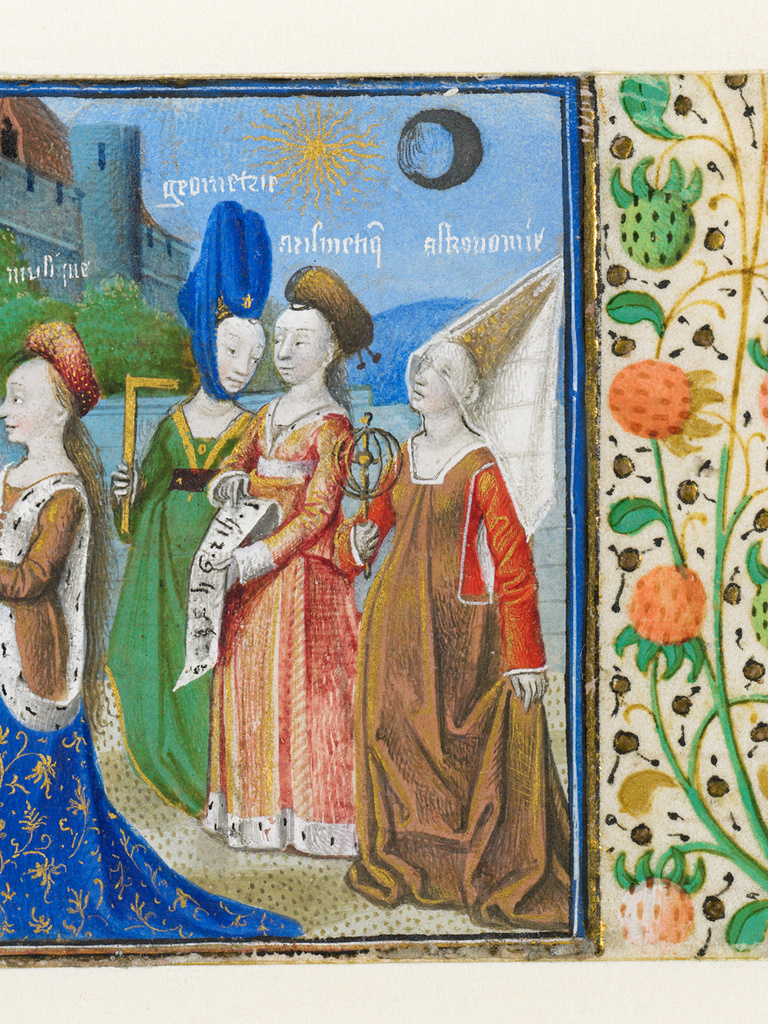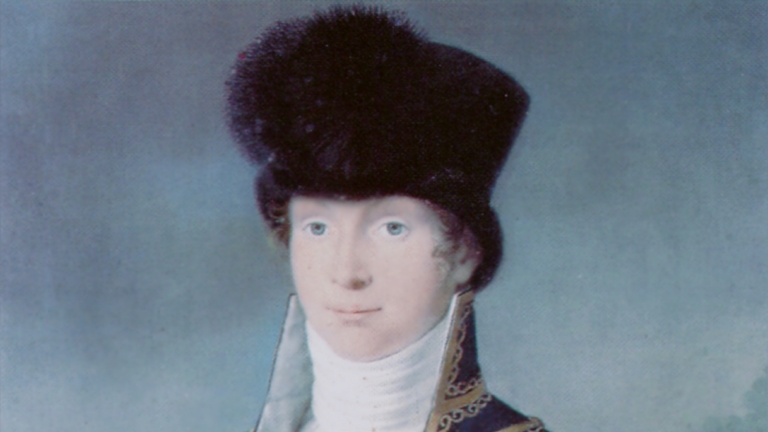Book Review: Illuminating Fashion

by Cynthia Howell, First published for the September/October 2011 issue of Finery

Are you looking for inspiration for your medieval gown? Has Google failed to yield images of extant garments? It’s time to turn to an unusual source: medieval illuminations. Illuminations provide a wealth of information on the appropriate types of fabrics and trims. Accessories often play a prominent role. Although the illuminations are tiny, they contain an amazing amount of detail.
In the early part of the middle ages, manuscripts were almost always created in monasteries. The texts were painstakingly copied and illustrated by monks, with illustrations used to highlight important sections of text. Starting in the 1200s, manuscript production moved to towns. Newly created universities increased the demands for books. People also began to commission manuscripts for their personal enjoyment. Thus, a wide range of clothing is shown, from rustic peasant attire to the finest garments worn by kings.
‘Fashion in the Middle Ages’ by Margaret Scott is an excellent overview of medieval fashions. The book has an astonishing amount of full color pictures with detailed information regarding the role of the clothing, but also the person wearing it. It also includes a glossary of dress and fabric terms.
Cloth was made from linen, wool or silk. Silk was generally reserved for the upper classes although demand increased among the privileged middle class. Cloth of gold, rich brocades, and velvet were all worn. ‘Charles the Bold Presented by St. George’ depicts Charles dressed in cloth of gold with a crimson floral pattern. Many examples of middle class clothing are available as well. The illustration ‘The Piercing of Christ’s Side’ includes a richly dressed merchant who is wearing a blue velvet gown trimmed in brown fur.
‘A Patron Presented to the Virgin and Child’ depicts a more modest middle-class woman clothed in a cotehardie and lower-class hood. Her dress is deep burgundy with no embellishment. Examples of peasant clothing tended to be more romantic rather than realistic but there are still important details. ‘The Annunciation to the Shepherds’ clearly shows a shepherdess wearing a protective side-laced overall over her cotehardie. ‘Calendar Scene for July: Mowing’ shows workmen stripped down because of the heat. The seams on the back of one workman’s tights are clearly visible.
Accessories played an important role in defining station. Crowns were frequently used to designate royalty, even for ridiculously inappropriate activities like hunting. Veils were worn by women of all stations, either alone or with elaborate headdresses. Hoods were common for both men and women. Men frequently wore hoods and hats together. Tools were also used to illustrate station. Whether it is the scholar with his pen, the hunter with his bow, the shepherd with his net bag, or even the lowly peasant with his rake, illuminations are filled with nuggets of information.
The wealth of detail is astounding. Considering the complexity of the technology available at the time, many of the illuminations are nothing short of miraculous. ‘Philosophy Presenting the Seven Liberal Arts to Boethius’ personifies the liberal arts as women. Philosophy stands at the front of the line in a stunning blue and gold shot gown edged with gold trim. Tiny pearls embellish her cuffs. Her headdress is extremely tall with a tiny all over floral pattern and a sheer veil. Grammar is unassumingly attired in an old-fashioned veil and cloak over a simple brown gown. She carries an open book and you can almost read the writing. Rhetoric is similarly dressed but her gown of orange and red shot glows where the skirts are pulled up and at the creases of her arms. She carries a scroll. Logic is more fashionably attired in a tall steepled headdress with diagonal stripes and a sheer veil. She carries a sieve to strain out points in arguments. Music is perhaps the most elaborately dressed, in a surcote ouverte in blue with gold embroidery trimmed with ermine, over a close fitting gown of gold brown silk. Her hair is worn down and you can see defined locks. Geometry’s green gown is trimmed with gold at the neckline and gold and embroidery at the hem. She wears a fanciful horned headdress, and is carrying a square. The hem and neckline of Arithmetic’s gown are trimmed with ermine, the skirts are open over an undergown, and the edges of the open gown are bound in diagonal stripes. Her headdress includes the detail of a tiny loop needed to support most headdresses of this period. Astronomy also wears a surcote ouverte, which is unusual in the folds at the center front and the squared armholes over a gown of orange and red shot silk. None of these figures is over two inches tall. According to Margaret Scott, it is unlikely that magnification was used in the creation of the illustrations.
Illuminations do not provide an entirely realistic depiction of medieval dress. Patrons desired a more idealized view of themselves, dressed in their very best attire. Peasants may have been too well dressed, in clothing that was more colorful than what they would have owned. All that being said, there isn’t a better source of inspiration for the period.





Leave a comment